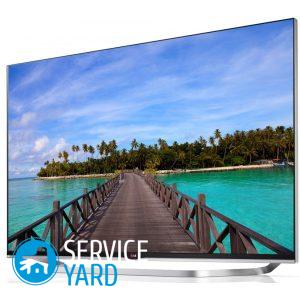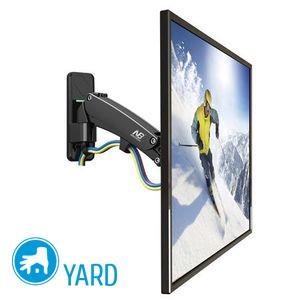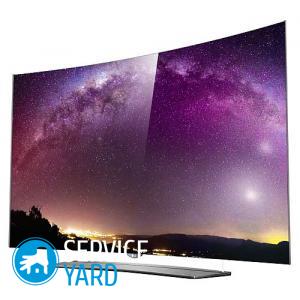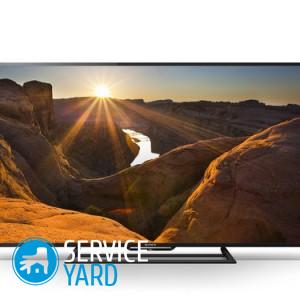Which is better - plasma or LCD TV?

Now choosing a TV is not so simple. The fact is that in stores they are presented in huge numbers, and completely different technologies are used for them. The task is quite difficult for customers: to decide which technology is better, for example, which is better - plasma or LCD TV. We learn what they all are.
to contents ↑Plasma panel
The base of the TV is represented by two very transparent plates of glass. The space between them is intended for special vessels that fill electrically charged gases. When an electric charge is applied, gas glow begins.
The surface of the vessels is covered by the fluorescent composition of the phosphor. Each pixel of a plasma TV includes three vessels that fill the red, green and blue phosphor.
Important! When controlling the level of three colors, any color can be reproduced. A computer is designed to control the level of electric charge that acts on the vessel.
Today, plasma panel ratings are the most controversial. Many people believe that technology is dying, since a limited number of manufacturers are involved in plasma production. But still, thanks to this technology, the image is of the highest quality, inaccessible to other technologies.
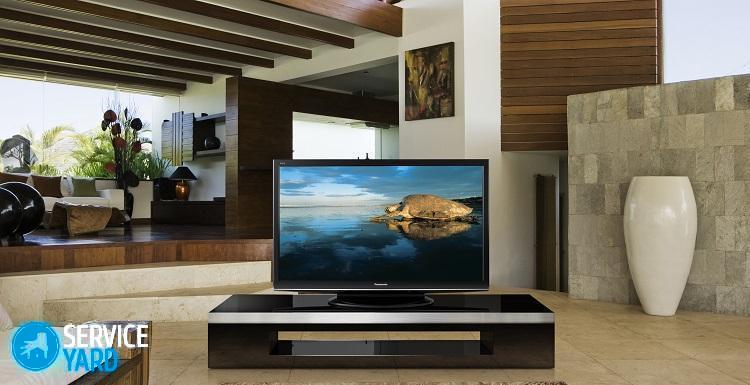
Important! Spend a lot of time in the kitchen, but don’t want to skip watching your favorite TV shows and movies? Use our tips tochoose a TV in the kitchen.
pros
Such models differ:
- High-quality and clear image;
- Vivid intense colors and contrast;
- Wide viewing angle;
- The perfect transmission of black;
- 3D support;
- Large screen size
- Realistic image.
Minuses
The disadvantages are:
- Surface vulnerability to damage;
- Higher power consumption;
- Highly reflective surface, which even anti-reflective coating sometimes can not cope with;
- Significant weight of the device, which is difficult to fix on the wall.
LCD TV
It is quite difficult for an ordinary consumer to choose which TV is better - LCD or plasma, because their technologies are somewhat similar. The design of the LCD TV is a multilayer structure:
- Thin film transistors TFT and electrodes are applied to parallel glass plates by spraying.
- The space between them is filled with a thin layer of liquid crystals, with the help of which an array of a huge number of pixels is formed.
- The placement of the RGB stencil is in front of the pixel, and in front of each.
- Polarizing filters with axes perpendicular to each other are applied to the plates.
- For backlighting, fluorescent CCFL lamps are used.
Important! After voltage is applied, the shape of the crystals changes, they polarize the light. To control the light transmission of crystals, the voltage at the electrodes is changed. Thanks to the transistors, one of the three cells opens on the RGB stencil. To form a color image, the basic colors are combined: red, green and blue.
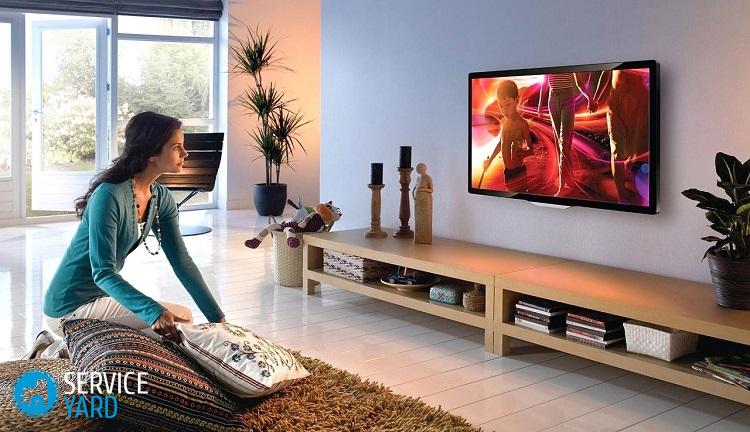
Important! Image quality will be better if you purchase a digital set-top box on your TV. The advantages of its use, characteristics, description and many other useful information can be found in our review. “Digital set-top boxes for TV - how to choose?”.
pros
It is difficult to choose which is better - LCD or plasma TVs, because the former still have a number of differences:
- Compact design;
- Correct image geometry;
- Lack of flicker.
Pros are:
- Low power consumption;
- Lack of static voltage at the screen;
- Low price;
- Longer service life.
Minuses
The disadvantages are:
- Lower contrast;
- Low black depth;
- Deteriorating image brightness and tint with increasing viewing angle.
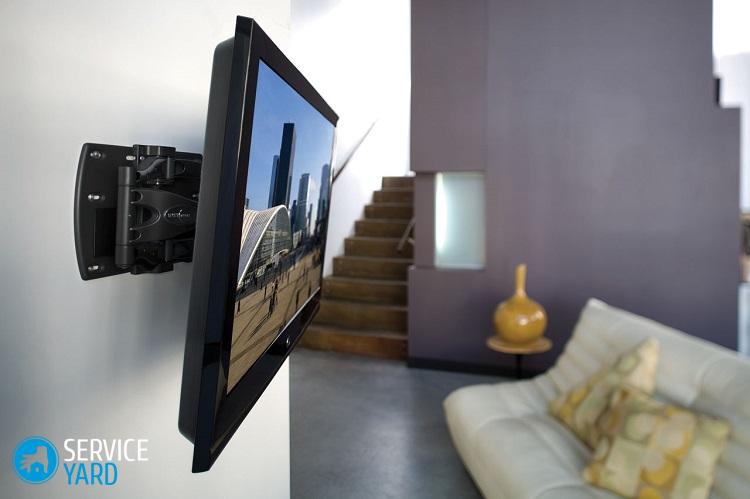
to contents ↑Important! Is there no room for a TV stand in the room? Place it on the wall. Find out,which bracket for tv on the wall is better.
LED panels
Despite the fact that this technology is considered new, it is still based on the same principles as conventional LCD TVs. The only difference is the replacement of fluorescent LED backlighting with arrays, which include white and multi-colored RGB LEDs. It is thanks to these innovations that consumers notice a number of positive changes.
Types of LED backlight:
- Edge, which is reasonably simple and inexpensive. In this case, the LEDs are located around the screen, for a uniform distribution of the backlight, a special scattering film is used located behind the screen. The main plus is the possibility of producing very thin panels, up to 1 cm.
- Direct, in which the arrangement of the LEDs is uniform throughout the volume.
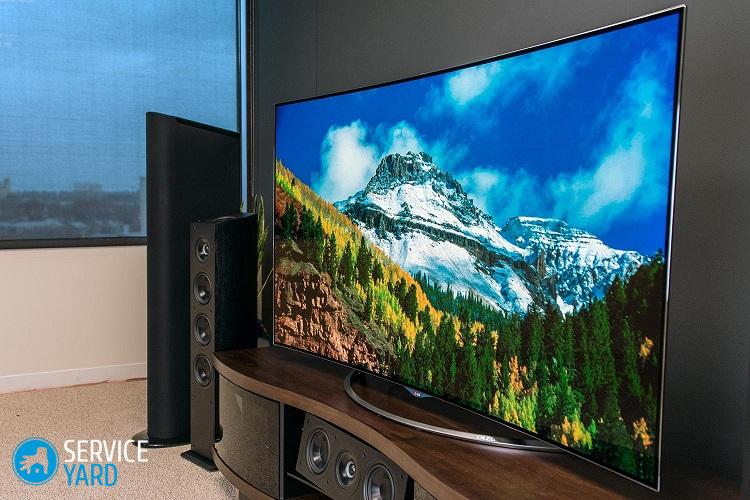
pros
Advantages of the technology are:
- Excellent color reproduction, brightness and contrast;
- Realistic and three-dimensional image display;
- It is possible to adjust the brightness in different areas.
Minuses
But, as usual, in the presence of advantages, there are also disadvantages that are identified in:
- In the worst viewing angle, it is therefore difficult to decide which is better - LCD or LED TV;
- Brightness may not be uniformly distributed across the screen;
- Colors may not display correctly and unnaturally;
- Great value.
Important! We have prepared a separate review in which you will learn how to choose an LED TV, what characteristics to pay attention to and a description of the best models. Follow the link “LED TVs are the best”.
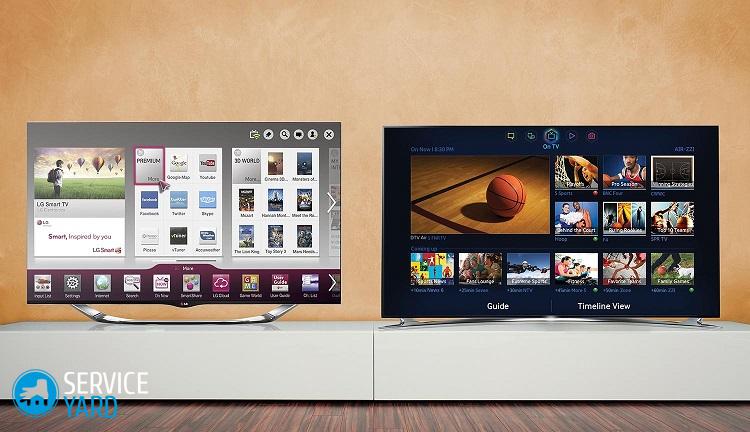
How to choose a TV for home?
The first step is to determine what the TV will actually be used for. Perhaps you will need it for watching news and on-air television programs, or perhaps you are a fan of concerts and action-militants? Where will it be located? Choose the right model with our Top TV Ratings.
Screen type
You need to understand that for the living room or kitchen you need completely different screens:
- The living room is the place for a large number of appliances: here you can find DVD and Blu-ray players, speakers and much more. Full-scale plasma is also appropriate here.
- In the kitchen, the TV usually acts as a background. The compact LCD TV fits perfectly.
- Cable TV and Internet content are usually viewed in the bedroom. Therefore, it will be a good option for both plasma and LCD or LED corresponding to the size of the room and the location of the format technology.
It is important to understand what is needed.
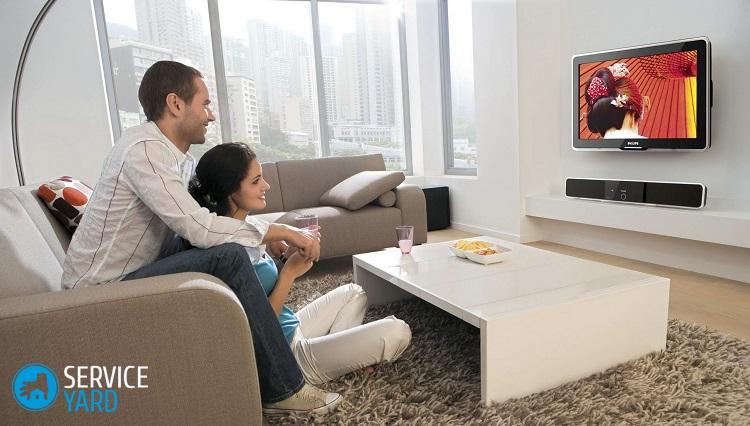
Important! Quite often, people cannot decide not only on the model, but also on the manufacturer. We have prepared a comparison of the TVs of the two brands - Samsung and Sony.
The size
Choosing a TV, you need to determine where it will be located in the apartment. Before choosing an LCD or LED TV, you need to know in which room it will be located: in a darkened room or in a brightly lit room.
Important! No less important is the distance to the viewing point, for example, a sofa. The best value is 2.5-3 meters.
Resolution
This characteristic has a direct connection with the diagonal of the device. Both of these parameters greatly affect how the image is perceived:
- Higher screen resolutions increase the ability to more clearly see small details and effects.
- As soon as the resolution decreases, you have to put up with small image errors, which are very noticeable at close range.
to contents ↑Important! Learn more about 4K TVs with the best models in our post. “Rating TVs 4k”.
Stock footage
As you can see, however, the question is not so simple. But, everyone chooses for himself. First you need to find out what exactly requires a TV, and then make a choice. Well, of course, consider the budget. We hope our article will help in the selection.





